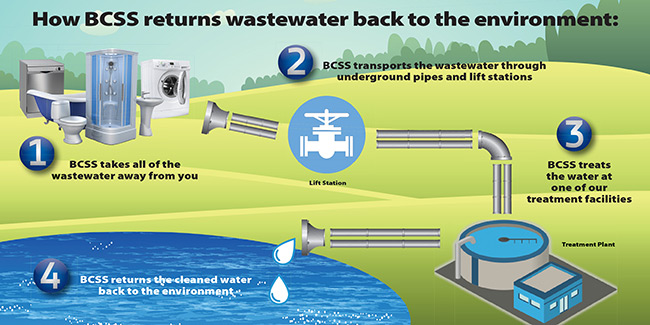A septic system is a type of onsite wastewater treatment system (OWTS), consisting of a septic tank that collects all the (wastewater) sewage. The sewage separates into a solid (sludge) that settles to the bottom, and a liquid effluent that flows into a leach field for final treatment by the soil with its natural bacteria. There are different types of septic systems, as described by the EPA’s septic system glossary. Read more about septic systems on the EPA’s Septic Smart website.
A sanitary sewer system collects wastewater (sewage) from homes, businesses, and many industries, and deliver it to wastewater treatment plants for treatment by an intricate process involving either chlorine or ultraviolet disinfection.
In summary, a conventional septic system treats (cleans) wastewater onsite, or within the soil on personal property, and typically, a [public] sewer system removes wastewater from a property through pipes and pumping systems to a wastewater treatment plant where it is treated and then discharged back into the environment.
Although these two methods are completely different ways to treat wastewater, they have some similarities. Both systems utilize natural bacteria, or microbes to help treat the waste, and both systems do not function properly with unsuitable items, such as grease and wipes. View full recommendations of things to keep out of septic systems, here and sewer systems here.
In the brief video below, a contractor for Better Homes and Gardens explains sewer systems versus septic systems, in addition to well water versus city water, complete with helpful illustrations.


